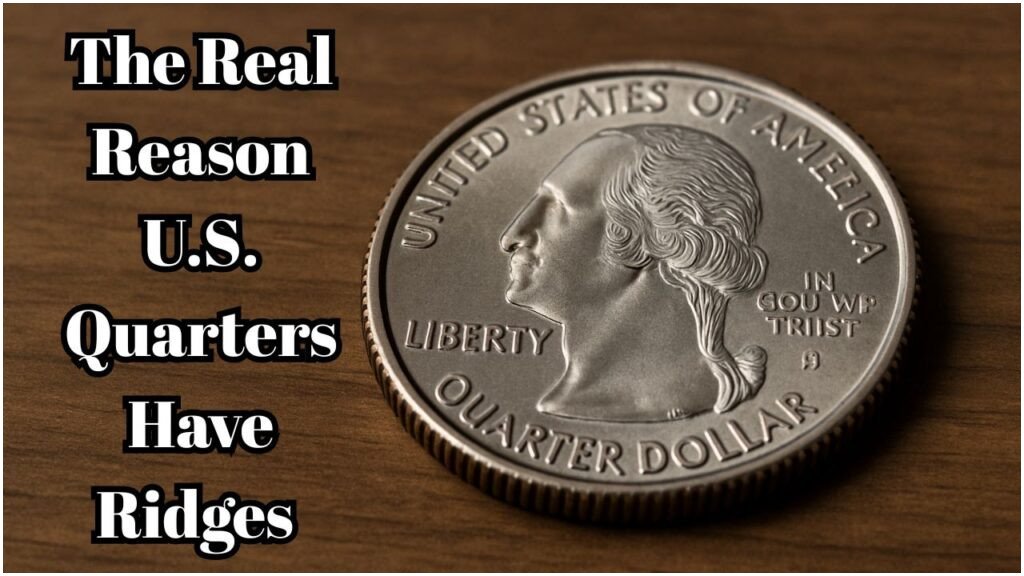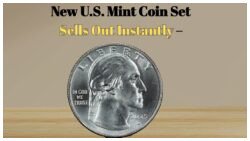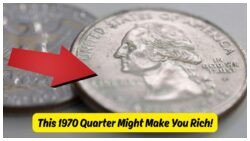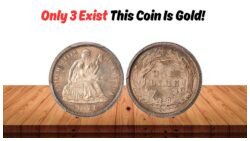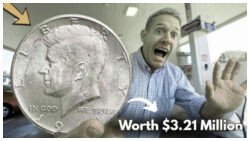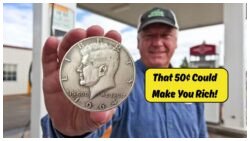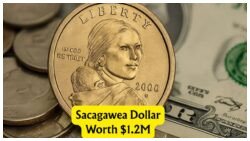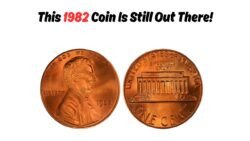U.S. Quarters – Have you ever closely examined the edge of a U.S. quarter? Unlike pennies or nickels, quarters have a series of fine ridges lining their edges. These ridges, known as “reeding,” aren’t just for decoration—they carry a rich and fascinating history rooted in economics, fraud prevention, and even national identity. What seems like a small detail is actually a legacy of America’s earliest attempts to safeguard the value of its currency. In this article, we’ll uncover the mind-blowing reason behind those ridged edges and how a centuries-old trick still plays a role in modern coin design today. Let’s dive into this little-known feature of American currency that has everyone talking.
The Origins of Ridged Edges: A Throwback to the 1700s
The practice of placing ridges on the edges of coins dates back to the 18th century when coins were primarily made from precious metals like gold and silver. This posed a serious problem.
- Coin Clipping Scandal: People used to shave small amounts of metal from the edges of coins and sell the clippings. Over time, this reduced the coin’s weight and value.
- No One Could Tell: Once clipped, the coin still looked legitimate unless you weighed it—which most merchants didn’t do.
- Royal Mints Respond: To combat this, mints started producing coins with distinctive edges, so tampering would be obvious.
- Isaac Newton’s Role: As Master of the Royal Mint, Newton introduced reeded edges on British coins to stop this fraud.
Thus, reeded edges became a global anti-theft measure—America soon adopted it too.
Why Quarters (and Dimes) Have Ridges but Nickels and Pennies Don’t
You might notice not all coins have ridges. There’s a reason behind this distinction:
| Coin | Ridges? | Why? |
|---|---|---|
| Penny | No | Made from copper, not worth clipping |
| Nickel | No | No precious metal content |
| Dime | Yes | Originally made of silver |
| Quarter | Yes | Originally made of silver |
| Half Dollar | Yes | Made with silver |
| Dollar | Some | Older coins had ridges, newer vary |
- Value Matters: Coins with more value were more likely to be targeted by coin clippers.
- Metals Used: Dimes, quarters, and half dollars originally contained silver—making them worth clipping.
- Nickels and Pennies: These were made from less valuable metals and weren’t worth the effort.
Modern Quarters Are No Longer Silver—So Why Keep the Ridges?
Today’s quarters are made of a copper-nickel alloy, and contain no silver. So why do they still have those ridges?
- Tradition & Consistency: People recognize and trust the design.
- Easy Identification: Visually impaired individuals can feel the ridges to identify the coin.
- Machine Compatibility: Vending machines and toll booths rely on the edge pattern to detect coins.
- Fraud Prevention: Though less crucial today, reeded edges still discourage counterfeiting.
So, even though the reason is no longer about stopping silver theft, ridges still serve practical and familiar purposes.
How Many Ridges Are on a U.S. Quarter?
This is one of those oddly satisfying facts:
The U.S. quarter has exactly 119 ridges on its edge!
- Each Ridge is Evenly Spaced: This ensures a uniform look and feel.
- Not Random: The U.S. Mint uses precise machinery to etch every ridge.
- Fun Fact: A dime, although smaller, has 118 ridges—just one less than a quarter.
It’s incredible to think such detailed precision is applied to a coin worth just 25 cents.
The Hidden Art of Coin Design: More Than Meets the Eye
Designing coins isn’t just about presidents and symbols—it’s a craft full of subtle decisions.
Reasons Ridged Edges Became a Design Standard:
- Anti-Counterfeiting: Helps deter fake coins from being passed off.
- Tactile Feedback: Helpful for the blind and visually impaired.
- Symbol of Trust: Shows the government’s commitment to secure currency.
- Public Expectation: People now associate ridges with real money, especially quarters and dimes.
Coin designers have to balance aesthetics with security and utility. Ridges are a small part of that balance.
Are Ridged Edges Still Necessary in the Digital Age?
In an era of credit cards, Apple Pay, and cryptocurrency, do coin ridges still matter?
- Yes, for Physical Transactions: Many low-income or older populations still rely heavily on cash.
- Yes, for Security: Fake coins can still be an issue—especially in high-volume systems like transit.
- Yes, for Accessibility: Many people with disabilities rely on tactile edges to count money.
- Yes, for Tradition: Currency design builds national identity and heritage.
Even if the original reason—silver theft—is gone, the ridges on coins have cemented their place in American money culture.
The next time you hold a quarter, take a closer look at those tiny ridges. What seems like a minor design choice is actually a window into the financial history of the world. From preventing 18th-century fraud to aiding modern accessibility, the ridged edge of a quarter is one of the most quietly brilliant features of U.S. currency. It’s a reminder that sometimes, the smallest details hide the biggest stories.
FAQs About U.S. Quarter Ridges
Q1. How many ridges does a U.S. quarter have?
A1. A U.S. quarter has exactly 119 ridges on its edge.
Q2. Why were ridges added to coins originally?
A2. Ridges were added to prevent coin clipping, where people shaved off valuable metal like silver or gold.
Q3. Do modern quarters still have silver in them?
A3. No, modern quarters are made from copper and nickel alloys and contain no silver.
Q4. Why don’t pennies or nickels have ridged edges?
A4. Because they were never made from precious metals and weren’t worth clipping or counterfeiting.
Q5. Are ridged edges useful today?
A5. Yes, for machine detection, accessibility, and maintaining public trust in coin recognition.
Why do U.S. quarters have ridged edges?
They were added to prevent people from shaving or counterfeiting them.

